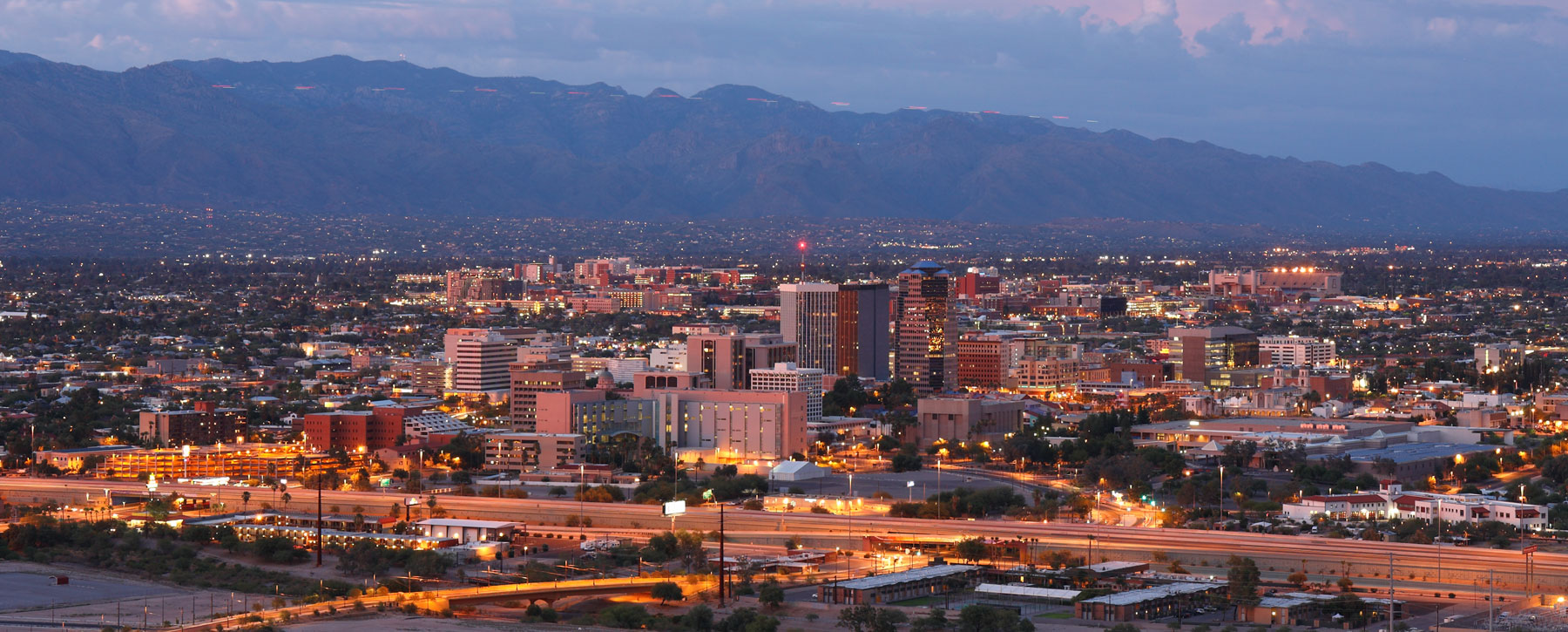Arizona averages 50 dangerous heat days a year, a number projected to increase to nearly 80 per year by 2050 as warming across the planet continues.
Arizona is known for its feast-or-famine monsoon seasons and desert climate. But precipitation declines have failed to reliably recharge the groundwater that sustains the state. Diminished snowpack in the Colorado River basins also has affected the water supply, reducing stream flows and threatening wildlife.
As a result of the high temperatures and persistent drought, 45% of the state’s population is at risk for wildfires.
While evidence of climate impacts keeps growing across Arizona, state leaders have hesitated to engage in ambitious climate action measures.
Arizona’s goals for reducing greenhouse gas emissions have fallen behind those of other states. The longstanding renewable portfolio standard for Arizona calls for public service corporations to generate just 15% of their annual retail electricity sales from renewable resources by 2025, and the state is on target to meet that benchmark. But the Arizona Corporation Commission (ACC) has rejected proposed rules to require electric utilities to further reduce greenhouse gas emissions, despite calls from the utility companies for the agency to establish a firm standard for all power generators in the state.
Arizona Public Service (APS), the state’s largest energy provider, has committed to achieve 100% clean energy by 2050. Tucson Electric Power (TEP) intends to reduce its carbon emissions 80% on a mass basis by 2035, and Salt River Project has a goal to reduce the intensity of its carbon emission 65% by 2035.
Western Resource Advocates has encouraged the utilities in the state to fulfill their clean energy goals. Without action from the ACC, however, the efforts of electric utilities are entirely voluntary and subject to the whims of future board members and corporate leaders.
Even so, WRA has been successful in convincing the ACC to require the state’s utilities to submit plans for promoting electric vehicles (EVs) and supporting the expansion of the EV charging network.
Moving forward, WRA is engaged with leaders in developing integrated resource planning rules, including providing funds to help communities located around coal mines and coal-fired power plants, including Indigenous tribal areas, find and develop new economic opportunities.

Transitioning the Power Sector in Arizona
The largest coal-fired power plant in the West, the Navajo Generating Station near Page, was shut down in 2019, along with the mine that supplied the plant. The rising costs of burning coal combined with the shrinking market for energy from coal spelled its demise.
Still, it was a victory for climate action in Arizona, a state where six counties are at risk of becoming uninhabitable in 20 to 40 years because of climate impacts.
Navajo tribal leaders vowed to become leaders in renewable energy development across the region. To achieve that goal, they entered into an agreement in January 2022 with Salt River Project to build a solar facility that will begin producing 200 megawatts of power by the end of the year.
It is just one of many solar energy installations being developed on tribal lands.
In a state that has struggled to enact renewable portfolio standards with accountability, WRA has worked successfully with the state’s utility companies to set voluntary goals for clean energy. The state’s largest energy provider, Arizona Public Service, in January announced its plan to deliver “100% clean, carbon-free energy” to all its customers by 2050.
In announcing its plan, APS called for modernizing the grid, improving energy efficiency across the economy, electrifying the transportation system in the state, and expanding renewable energy generation and storage.
WRA also was instrumental in the decision by the ACC in late 2021 to require the state’s utilities to submit transportation electrification plans designed to encourage the proliferation of EVs.
The utilities were required to file their first plans in June 2022 and every three years thereafter. The plans will address such challenges as the need to expand the vehicle charging network, modernize the grid, transition to clean energy, and provide support for underserved communities seeking access to EVs.
The plans would result in about 1 million EVs on the roads across the state by 2030 under a moderate scenario described by the commission and nearly 1.5 million EVs under the high adoption scenario.

WRA’s Years Of Success Working On Clean Energy In Arizona
2021
Transportation Electrification
Persuaded the ACC to require electric utilities to propose comprehensive plans for transportation electrification. The publicly owned utilities in Arizona are now obligated to file these plans at least every three years. This vote was the culmination of several years of work in Arizona to help reduce harmful pollution from fossil-fueled vehicles while taking steps to ensure all utility customers will reap the economic benefits of the ongoing nationwide transition to electric vehicles.
2019
Time-of-Use Energy Transmission Lines
Successfully advocated for better time-of-use rate plans in an APS rate case to manage demand and avoid grid failure during the hottest days each year. As a result, favorable off-peak rates were established in the rate case to encourage customers to conserve energy during peak demand and to charge electric vehicles (EVs) during the evening or during peak solar energy production periods.
2019
Public Utilities Regulatory Policies Act (PURPA)
Convinced the ACC to adopt an 18-year minimum contract term length for qualifying renewable facilities under the federal PURPA. The lengthened period provides these facilities with the opportunity to build long-term capital from investors. APS, TEP, and UNS Electric (UNSE) had all requested a two-year term, which had not been effective in encouraging the development of small power production in Arizona.
2013
Transition From Coal
Helped negotiate retirement of one unit of Arizona’s Navajo Generating Station, avoiding nearly 6 million tons of carbon-dioxide emissions per year and facilitating increased renewable energy and clean energy investments. The agreement used WRA’s innovative credit-based carbon reduction program to drive reductions and accurately measure progress.
2012
Greenhouse Gas Reductions
Won ACC approval of Arizona Public Service Company’s plan to retire 560 megawatts of coal capacity at Four Corners Power Plant. This reduces carbon-dioxide emissions by 3 to 5 million metric tons per year.
2009
Renewable Energy
Reached agreement with APS requiring the utility to obtain 10% of its energy needs from renewable resources by 2015, doubling the amount of renewable energy required under the state’s renewable portfolio standard.
2008
Clean Energy Plan
Spurred APS to develop a new resource plan that recognizes renewable energy and energy efficiency as major new resources, with no new coal plants contemplated to meet future demands.
2006
Goals for Renewables
Helped convince the ACC to require electric utilities to generate 15% of their energy from renewable resources by 2025.
2005
Power Rate Reforms
Influenced APS to acquire 150 megawatts of geothermal, wind, and landfill gas resources as part of a rate case settlement.
2001
Renewable Portfolio Standards
Helped pass renewable portfolio standards in Arizona, directing utilities to provide a certain percentage of their power from renewable resources like solar, wind, and geothermal.

